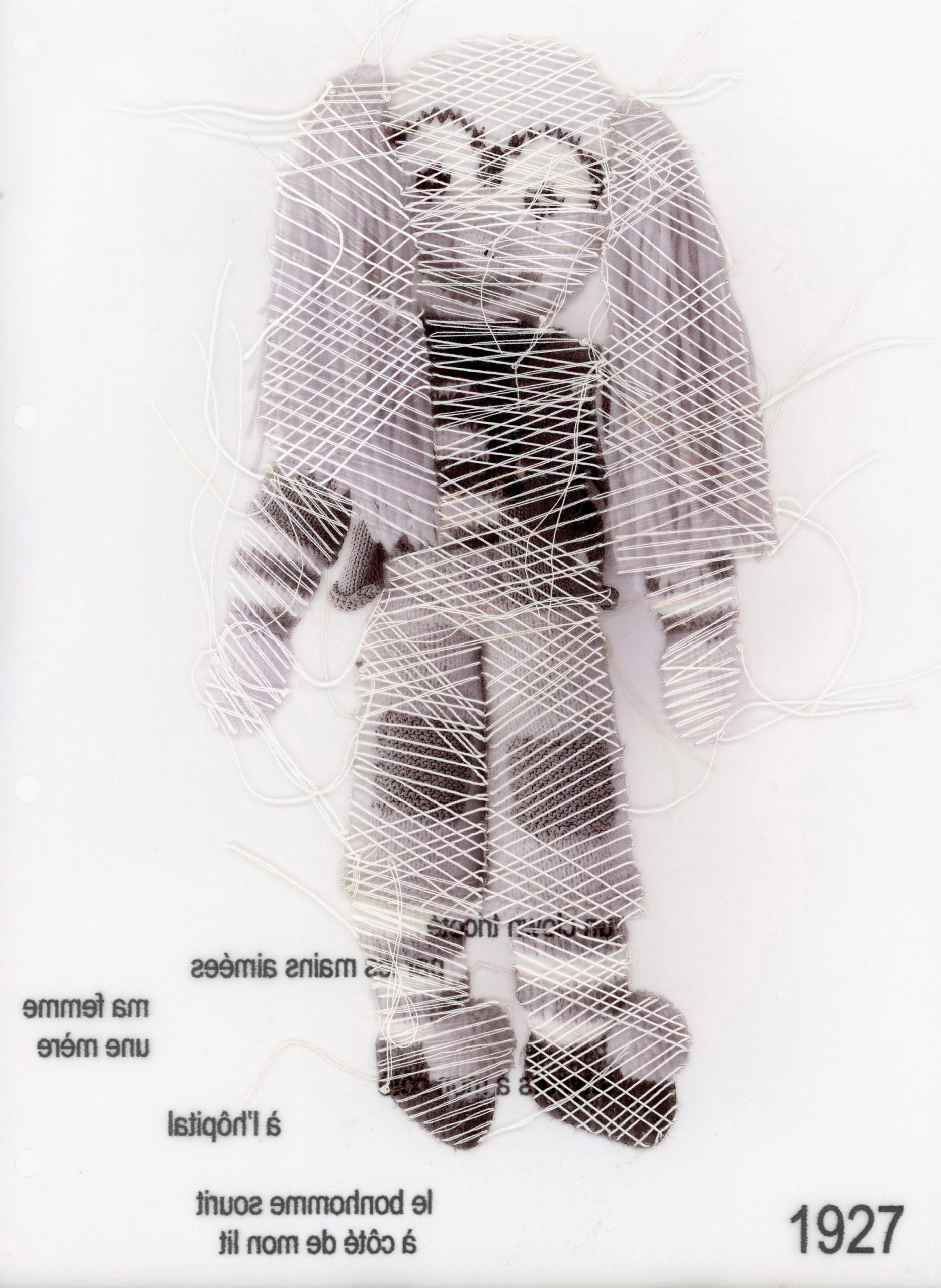Unicité ordinaire
Fil blanc sur transparent, A4, 2019-2022
Cette archive a commencé à se développer en 2019 sous le nom de “Objets de la mémoire” et elle s’est transformée et élargie au cours de l’année 2021.
En principe, il s’est agi de récolter des images d’objets identitaires et affectifs qui m’étaient transmises par téléphone, mail ou par rencontre directe avec les personnes sollicitées. Cette première approche s’inscrivait dans un processus de disparition naturelle des traces humaines.
Plus récemment, cette collection est devenue une archive qui s’est enrichie des histoires des objets, avec un catalogage chronologique de la date de naissance des participant.e.s né.e.s entre 1918 et 2018.
Les photos imprimées sur transparent sont cousues au fil blanc dans le but de préserver l’image, tandis que les narrations, souvent reçues par voie orale, sont comme filtrées par le temps et restituées à partir des traces restées dans ma mémoire.
Dans l’action de coudre s’opère une perte de lisibilité du sujet, tandis que dans la narration, la perte est déjà présente au moment de la retranscription puisqu’elle se base sur le souvenir de ce qui a été raconté, ainsi que sur l’élaboration du texte.
White thread on transparent, A4, 2019-2022
This archive began to develop in 2019 under the name of «Memory objects» and was transformed and expanded in the course of 2021.
In the beginning, it was a matter of collecting images of identity and emotional objects that I received by telephone, email or encountering the people. This first approach reflected about the process of natural disappearance of human traces.
More recently, the collection has become an archive that includes the stories of the objects, with a chronological cataloguing of the date of birth and the age of the participants born between 1919 and 2019.
The photos printed on a transparent sheet are sewn with white thread in order to preserve the image, while the narrations, often received orally, are filtered by time and modified by my memory.
In the action of sewing, there is a loss of legibility of the subject, whereas in the narration the loss is already present during the transcription based on the recall and the arrangement of the text.
If the object and its narrative are transformed, the story of the attempt to preserve remains, as well as the perception of the care and effort for the constitution of the archive. The act of archiving responds to the utopian desire to preserve the traces of ‘ordinary’ lives and ‘unique’ memories that normally dissolve over time in a cycle of natural biodegradation.







